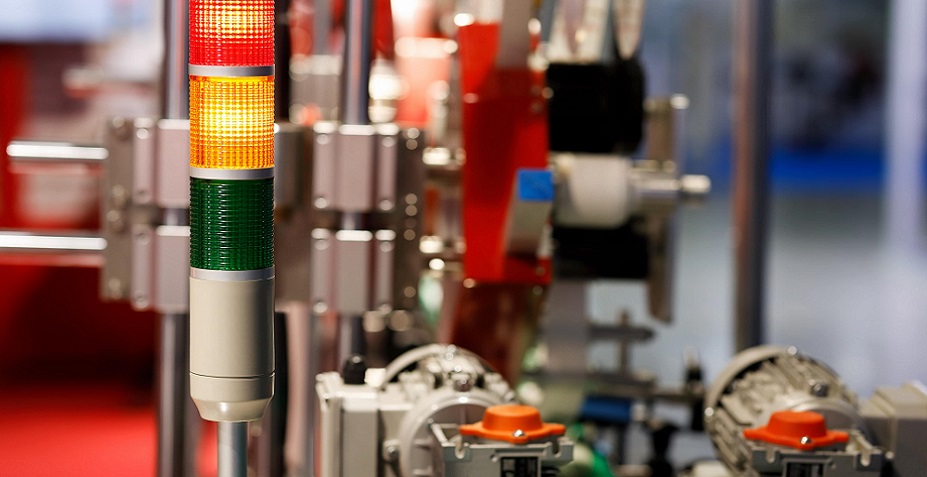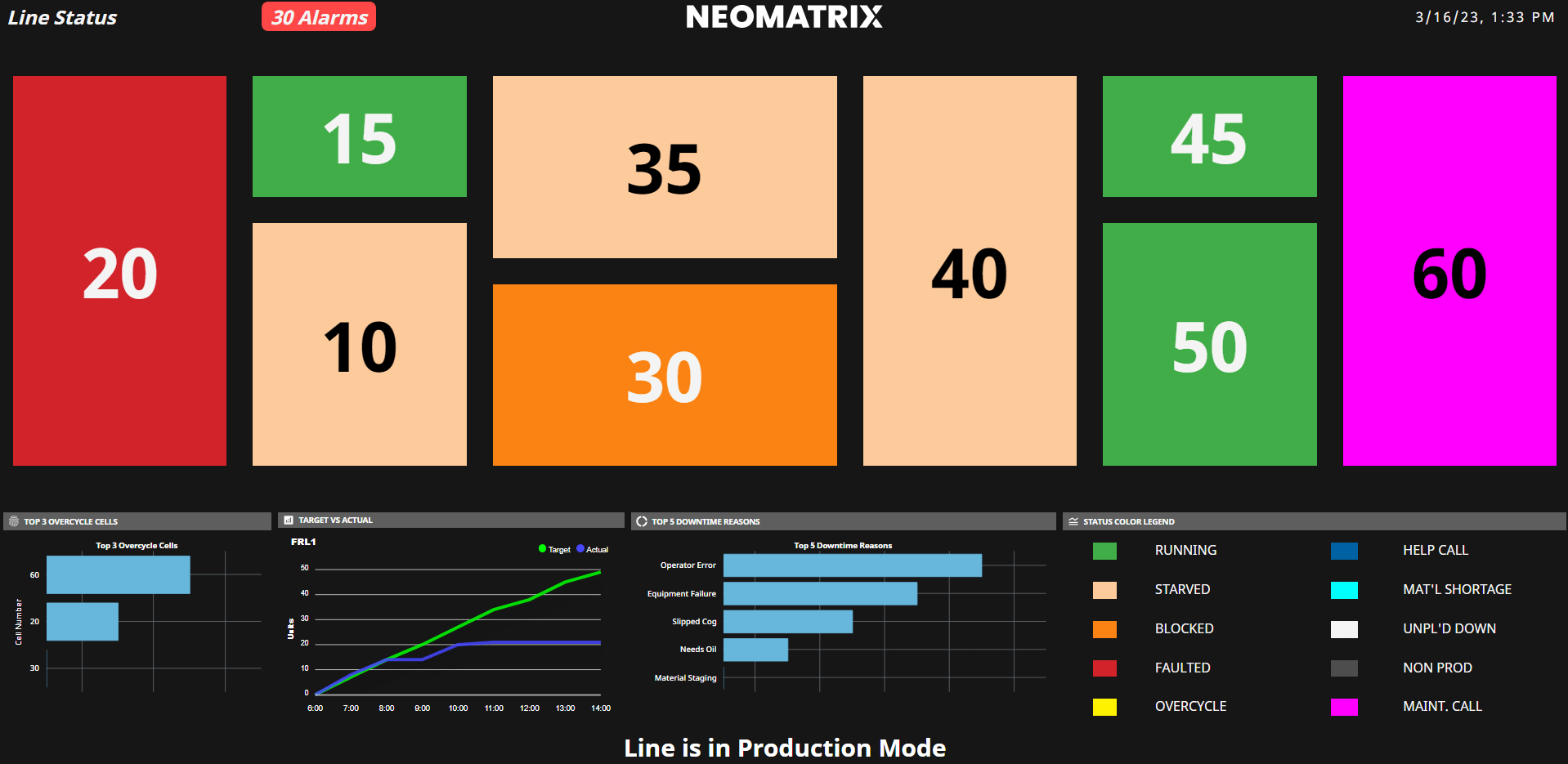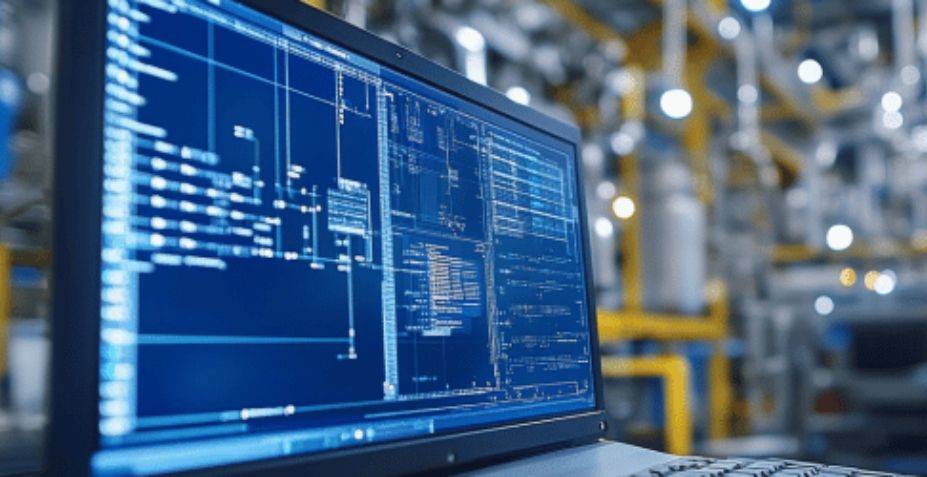 In Lean manufacturing, the Andon system was created to notify operators of any issues on the production line as a means to promptly identify and tackle any production issues. Traditionally, an Andon was made up of a cord, which the operator pulls to indicate the occurrence of a problem, and an Andon light, which draws attention to the issue. Today, Andon systems are available in various forms, each progressively more advanced in terms of technology:
In Lean manufacturing, the Andon system was created to notify operators of any issues on the production line as a means to promptly identify and tackle any production issues. Traditionally, an Andon was made up of a cord, which the operator pulls to indicate the occurrence of a problem, and an Andon light, which draws attention to the issue. Today, Andon systems are available in various forms, each progressively more advanced in terms of technology:
Andon Light: The classic Andon light system consists of a pull cord (or button) and light. The change in color helps to quickly determine the area that needs assistance. Conventionally, a simple light system displays green, yellow and red.
Andon Board: The Andon board (or dashboard) is a digital display that automatically updates the status of production lines utilizing color coding. It serves as a centralized and accurate source of information for current manufacturing conditions. With a quick look, you can easily view and interpret production goals, real-time numbers, downtime, etc.
Andon System: While an Andon board is a basic level of the Andon system that provides a visual representation of production lines, an Andon system is a more advanced version of the board. It integrates additional signal sources, such as lights, sounds, or alarms to alert workers and managers to a problem or issue in the manufacturing process so that they can take immediate action to resolve it.
Andon Digital System: An Andon digital system is an advanced version of the Andon system that integrates digital manufacturing concepts. It uses technology such as Internet of Things (IoT) devices, real-time data analysis, and machine learning algorithms to automate the monitoring and control of the production process.
With an Andon digital system, production line status and any issues that arise are tracked in real time, and alerts are sent to the appropriate personnel via mobile devices or other communication channels. This type of system provides a more efficient and effective approach to manufacturing by reducing downtime, minimizing waste and increasing overall productivity.
How does an Andon Board Work?
Andon boards gather data from multiple sources, such as production lines, equipment sensors and quality control inspections. This data is then processed and displayed on a screen or series of screens in a central location, where managers and workers can easily monitor it. The information on the board is usually in the form of color-coded graphs, charts and indicators that are updated in real-time and provide a current snapshot of production processes.
Benefits of Andon Boards
- Increased visibility: Andon boards provide a centralized view of production processes, making it easier to monitor performance and identify problems.
- Improved Quality Control: By providing real-time data, Andon boards allow manufacturers to quickly identify and resolve quality control issues, reducing the risk of defects and improving overall product quality.
- Enhanced efficiency: Andon boards in manufacturing help identify bottlenecks in production processes, allowing manufacturers to adjust and optimize their operations.
- Better collaboration: Andon boards provide a common platform for all members of the production team to view and share information, improving communication and collaboration.
- Increased agility: Andon boards allow manufacturers to respond quickly to changes in production processes, improving overall agility and reducing downtime.
Andon boards are a tool used in lean manufacturing environments to promote continuous improvement and optimize production processes. The visual nature of Andon boards helps workers quickly see the same metrics and work together to solve problems. The real-time production tracking by these boards helps to identify areas for improvement and monitor progress, ensuring that problems are addressed in a timely manner.
Customizing Metrics on an Andon Board
Metrics that belong on an Andon board can vary depending on the specific production processes and goals of a manufacturing organization. However, some common metrics that are often included on an Andon board are:
- Equipment utilization: This metric measures the amount of time equipment is operational and producing goods.
- Production output: This metric tracks the number of products produced in a given time period, such as per hour or per day.
- Quality control metrics: This can include the number of defects found, the rate of defects, and the number of rework or repairs needed.
- Equipment downtime: This metric tracks the amount of time equipment is not operational due to maintenance or repairs.
- Work-in-process: This metric tracks the quantity of partially completed products waiting to be finished.
- Lead time: This metric measures the time it takes to complete a product from start to finish.
- Operator performance: This metric tracks the performance of individual operators, such as their efficiency, speed, and accuracy.
- Inventory levels: This metric tracks the amount of raw materials and finished goods available in inventory.
- Safety metrics: This can include the number of accidents or near misses, the number of safety incidents, and the number of safety inspections conducted.
By including these and other relevant metrics on an Andon display board, manufacturers gain a clear understanding of the performance of their production processes and equipment, allowing them to make data-driven decisions to improve quality and efficiency. To ensure workers continually view these boards, some manufacturers even add tickers to their boards with information such as the weather. Below is an example of an Andon board and the metrics they display.

Why Implement an Andon Board?
Andon boards provide manufacturers with more control over their production processes and offer manufacturers real-time information, scalability and flexibility, and customizable visualization.
Real-time Information: Andon boards give you access to real-time information about your production processes, giving you instant insight into what’s happening on the factory floor. It’s possible to connect multiple sources to access live data, allowing you to monitor production performance, identify issues, and make informed decisions in real time. Automated alerts and notifications ensure you’re always up to date on what’s happening in your organization.
Scalability & Flexibility: Andon boards are effective whether you have a single production line or multiple connections. To fit your requirement specifications, you can easily add or remove elements, change the layout, and adjust the data visualization.
Customizable Visualization: Choose from a variety of data visualization options to customize the display in the format that makes the most sense to you.
Why NeoMatrix Recommends an Andon Display Board
Andon boards are a valuable tool for improving the efficiency of manufacturing processes. They allow managers and workers to monitor the flow of work and identify bottlenecks, enabling them to make informed decisions and drive continuous improvement. So, if you’re looking to optimize your manufacturing processes, contact us today to learn more about how we can customize and implement an Andon Board solution for your plant floor.

 March 17, 2023
March 17, 2023 
 November 18, 2025
November 18, 2025 

